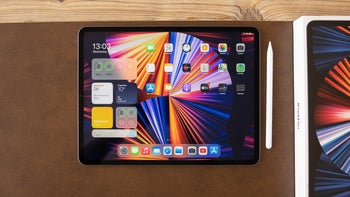Apple to launch a 12.9" iPad Pro with OLED display

A recent report from venerable Apple analyst Ming-Chi Kuo advised that the iOS device maker has scrapped its plans for the first iPad model with an OLED display. Instead, we are supposed to see an 11" iPad Pro with a mini-LED display.
Previously, he advised that we will see the first OLED iPad as soon as next year, most likely the current iPad Air 2020 successor, while an OLED iPad Pro isn't expected until 2023. Until then, the new iPad Pro 2021's mini-LED panel will have to tide you over.
Not only will we witness the birth of a beautiful thing, which an iPad with an organic light-emitting display would undoubtedly be, knowing Apple's track record in screen quality and calibration, but it will reportedly also run on the most powerful chipset on the market then - an Apple A16 - crafted on the 3nm node.
According to TSMC's production schedule we will see up to 15% performance gain, 30% power reduction, and a logic density gain of up to 70% over the current 5nm process, or a combination between the three, as is usually the case.
Not too shabby but now that Apple has reportedly broken its partnership with Samsung Display over the 11" iPad with OLED display, what else is there?
A 12.9" OLED iPad Pro with bright LG display
That's right, Apple has apparently been satisfied with LG's OLED iPad display efforts to such an extent, that it has scraped the partnership with Samsung and moved to source the panel from LG.
It's just that instead of the 10.68" OLED screen by Samsung, LG will be providing a 12.9" display, tips The Elec. Could it be for an iPad Pro instead given that the current top-end model has a display with an exactly 12.9" diagonal? Makes sense.
For Apple, the switch will lower the OLED screen dependency from Samsung that still supplies the lion's share of its iPhone display panels. The move to an even larger panel sourced by LG is also warranted by the fact that LG may not be as good as Samsung in small-size OLED screens, but the mid- and large-sized displays are its forte.
Just look at the plenty of LG OLED TV models and you'll see why, and there are more requirements to larger OLED panels that apparently only LG can fulfil for now. Reportedly, LG's head start in larger size OLED screens development is warranted by its "two-stack" OLED RGB layering method exclusivity, claim the industry insiders.
This doubles the brightness of said displays and increases their lifespan to 10+ years, and we know that large electronics like TVs are in the house for much longer than perishable smartphone that people keep on average for three years now.
Expect a 2023 release for the first OLED iPads
The industry insiders who tipped that Apple has switched to LG for its first iPad OLED panel also claim that it could be released in "late 2023 to early 2024." That would give Apple plenty of time to develop its move to OLED tablets and, as explained above, the switch to LG as their main display supplier will shoot several birds with one stone.
Apple will allegedly release both an 11" OLED iPad and a 12.9" OLED one in 2023, bringing more credibility to the speculation that its first OLED tablets will be in the Pro series. Surprisingly, Samsung is now tipped to also play a part in producing the displays for this dynamic duo, despite stopping its 10.86" OLED screen development for an iPad Air successor.
Perhaps the expectations are that it will catch up to LG's two-stack method in time to take part in the production of an 11" OLED iPad Pro in 2023. Possibly, given that it's reportedly working on an 8.5-gen OLED display development, whereas its current frugal LTPO iPhone 13 Pro series screens are made with the 6th-gen method.
In any case, expect a miniLED 11" iPad Pro next year, and the first OLED iPad Pros in 2023 is the moral of the story, and they will all have fast and frugal high refresh rate LTPO panels.













Things that are NOT allowed: